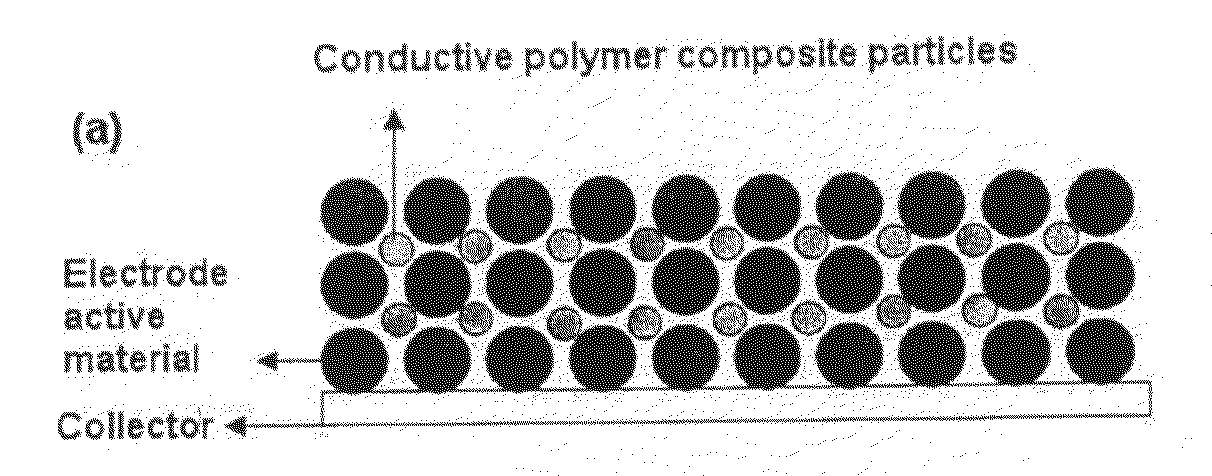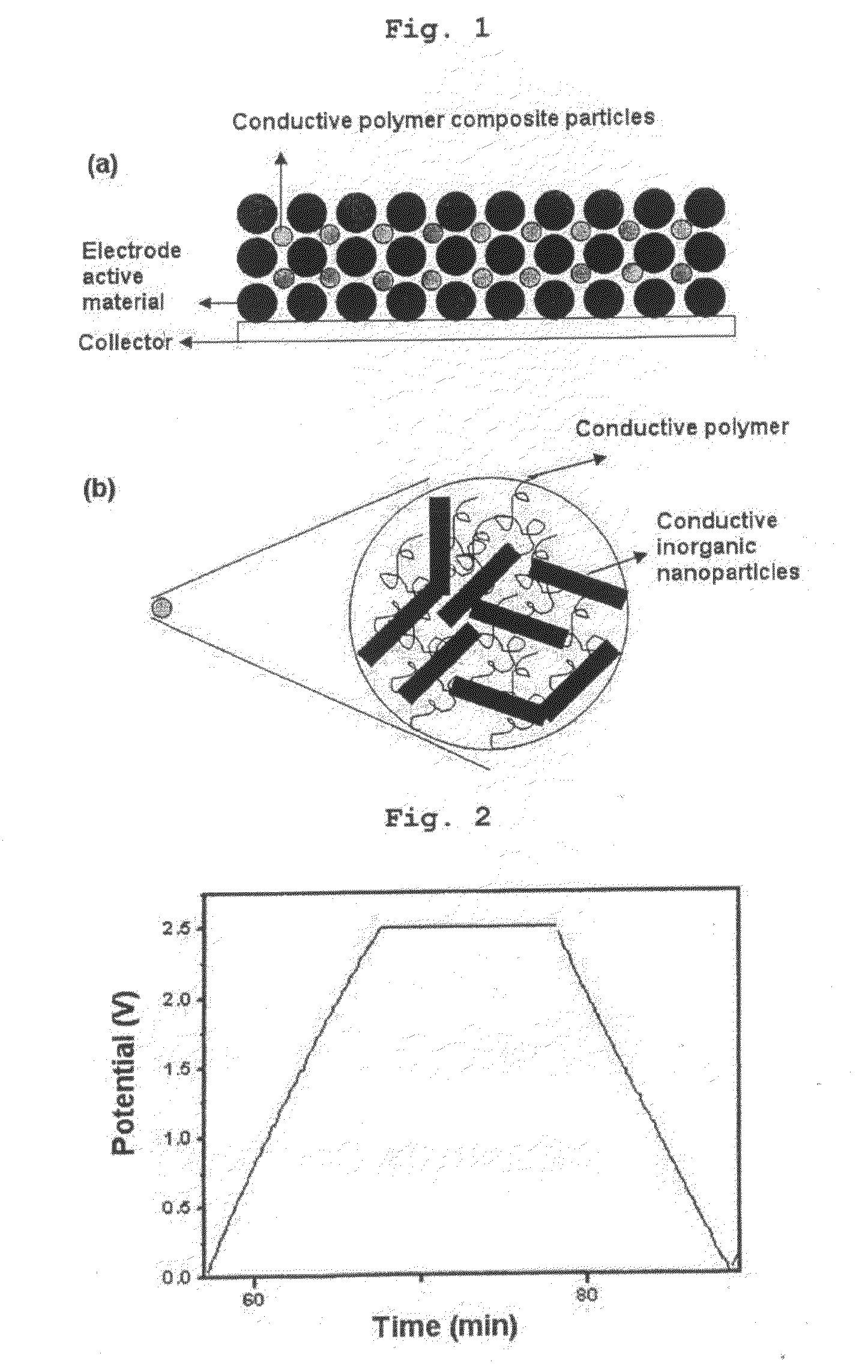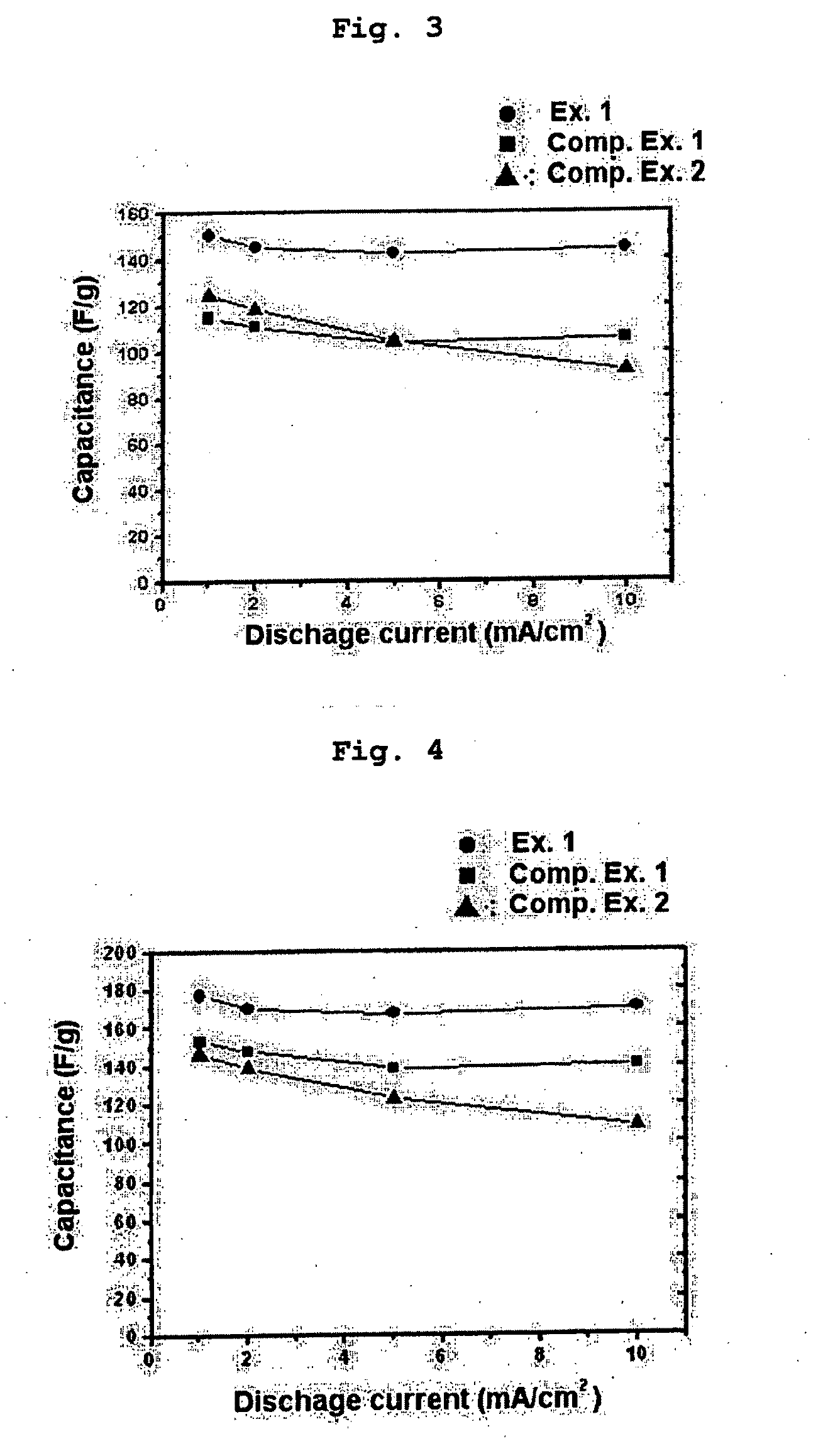Electrochemical Energy Storage Device with High Capacity and High Power Using Conductive Polymer Composite
- Summary
- Abstract
- Description
- Claims
- Application Information
AI Technical Summary
Benefits of technology
Problems solved by technology
Method used
Image
Examples
example 1
1-1. Preparation of Composite Particles (Conductive Carbon / Conductive Polymer)
[0061]To an aqueous solution of a conductive polymer, PEDOT, 2 wt % of carbon nanotubes (thickness: 20 nm, length: 5 μm) were dispersed and the resultant solution was modified to have an acidity of pH 3 so as to improve the dispersibility. The uniformly mixed PEDOT / carbon nanotube slurry was subjected to condensation and drying to provide a PEDOT / carbon nanotube composite. The final composite particles had a diameter of 500 nm.
1-2. Manufacture of Electrode
[0062]To distilled water as a solvent, 85 wt % of activated carbon (MSP20, Kansai Coke and Chemicals Co., Ltd.) as an electrode active material, 5 wt % of Super-P (carbon black) spherical particles having a particle size of 500 nm, 5 wt % of PTFE as a non-conductive binder, and 5 wt % of the PEDOT / CNT composite particles obtained as described in Example 1-1 were added to provide a five-component mixture as electrode slurry. The electrode slurry was applie...
example 2
[0064]An electric dual layer capacitor was provided in the same manner as described in Example 1, except that 95 wt % of activated carbon as an electrode active material and 5 wt % of the PEDOT / CNT composite prepared according to Example 1 were used to provide an electrode. The capacitor obtained in this example 2 showed quality similar to that of the capacitor according to Example 1.
experimental example 1
Adhesion Test
[0068]The following test was performed to evaluate the adhesion of the electrode comprising the composite particles according to Example 1. As controls, the electrode comprising the conventional binder according to Comparative Example 1, and the electrodes using either of conductive nanoparticles and a conductive polymer according to Comparative Examples 2 and 3 were used, respectively.
[0069]The adhesion test was performed by attaching a tape onto the surface of the electrode active material layer of each electrode and removing the tape therefrom. The amount of each electrode active material layer remaining on the tape after removing the tape was shown in the following Table 2.
[0070]After the test, it could be seen that even though the electrode according to Comparative Example 1 used a non-conductive binder (PTFE) in an amount corresponding to at least three times of the amount of the binder in the sample, the tape was stained with the electrode active material. On the...
PUM
 Login to View More
Login to View More Abstract
Description
Claims
Application Information
 Login to View More
Login to View More - Generate Ideas
- Intellectual Property
- Life Sciences
- Materials
- Tech Scout
- Unparalleled Data Quality
- Higher Quality Content
- 60% Fewer Hallucinations
Browse by: Latest US Patents, China's latest patents, Technical Efficacy Thesaurus, Application Domain, Technology Topic, Popular Technical Reports.
© 2025 PatSnap. All rights reserved.Legal|Privacy policy|Modern Slavery Act Transparency Statement|Sitemap|About US| Contact US: help@patsnap.com



